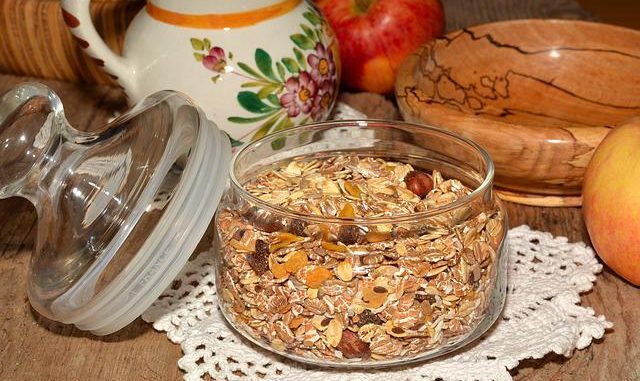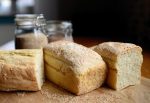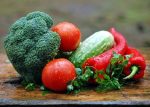
Non-starch polysaccharides (NSPs) are a major part of dietary fibre and can be measured more accurately than total dietary fibre. Also known as non α-glucans, they can be divided into cellulose and non-cellulosic polysaccharides.
The cellulose polysaccharides include cellulose and hemicellulose, which are classes of insoluble polysaccharides (insoluble fibre).
Cellulose
Polysaccharides containing up to 10,000 closely packed glucose units, arranged linearly, making cellulose very insoluble and resistant to digestion by human enzymes. This helps other food and waste products move through the GI tract more easily. They are the principal component of the cell walls of most plants.
Typical sources include wholegrain bread and pasta, brown rice, wholegrain cereals such as muesli and porridge, shredded wheat, and fruits and vegetables.
Hemicellulose
Polysaccharides containing sugars other than glucose. Associated with cellulose in cell walls and present in both water soluble and insoluble forms.
It includes pectins, glucans, gums, mucilages, storage polysaccharides such as inulin, which are classed as soluble polysaccharides (soluble fibre) and fungal chitin, which is an insoluble polysaccharide.
β-glucan is a non-cellulosic polysaccharide which is classed as soluble. The β-glucans can be divided into soluble and less soluble β-glucans. It has been specifically recognised for its heart health benefits. It also has its own specific AOAC method of measurement.
Hemicelluloses are found in barley, oats, beans and lentils, chickpeas, wheat, maize/corn, rye and in most fruits and vegetables.
Health Benefits of Non-Starch Polysaccharides
Insoluble fibre helps to keep bowels healthy. It acts similar to a sponge, absorbing up to 15 times its own weight in water and swelling up in size. This means that eating a high fibre food can allow us feel fuller for longer, meaning we are less likely to eat too much. The body cannot break down fibre, and its main effect is bulking up the stools by holding water, which makes it great for helping ease constipation. That implies it can sometimes help prevent common disorders of the gut. Bran is one of the highest water holding sources of fibre.
Soluble fibre absorbs water to form a gel, and also helps with the feeling of fullness, but the gel tends to hang onto some substances such as glucose and bile acids and slows the rate at which these are absorbed into the blood stream. Soluble fibre therefore specifically helps to control blood sugar levels, to lower cholesterol levels, to maintain good digestive health and to prevent some cancers.


Leave a Reply